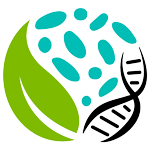ALD1 accumulation in Arabidopsis epidermal plastids confers local and non-autonomous disease resistance
Shang-Chuan Jiang, Nancy L. Engle, Zeeshan Zahoor Banday, Nicolás M. Cecchini, Ho Won Jung, Timothy J. Tschaplinski, and Jean T. Greenberg
19 January 2021, Journal of Experimental Botany 72(7): 2710-2726; https://doi.org/10.1093/jxb/eraa609
Abstract
The Arabidopsis plastid-localized ALD1 protein acts in the lysine catabolic pathway that produces infection-induced pipecolic acid (Pip), Pip derivatives, and basal non-Pip metabolite(s). ALD1 is indispensable for disease resistance associated with Pseudomonas syringae infections of naïve plants as well as those previously immunized by a local infection, a phenomenon called systemic acquired resistance (SAR). Pseudomonas syringae is known to associate with mesophyll as well as epidermal cells. To probe the importance of epidermal cells in conferring bacterial disease resistance, we studied plants in which ALD1 was only detectable in the epidermal cells of specific leaves. Local disease resistance and many features of SAR were restored when ALD1 preferentially accumulated in the epidermal plastids at immunization sites. Interestingly, SAR restoration occurred without appreciable accumulation of Pip or known Pip derivatives in secondary distal leaves. Our findings establish that ALD1 has a non-autonomous effect on pathogen growth and defense activation. We propose that ALD1 is sufficient in the epidermis of the immunized leaves to activate SAR, but basal ALD1 and possibly a non-Pip metabolite(s) are also needed at all infection sites to fully suppress bacterial growth. Thus, epidermal plastids that contain ALD1 play a key role in local and whole-plant immune signaling.

